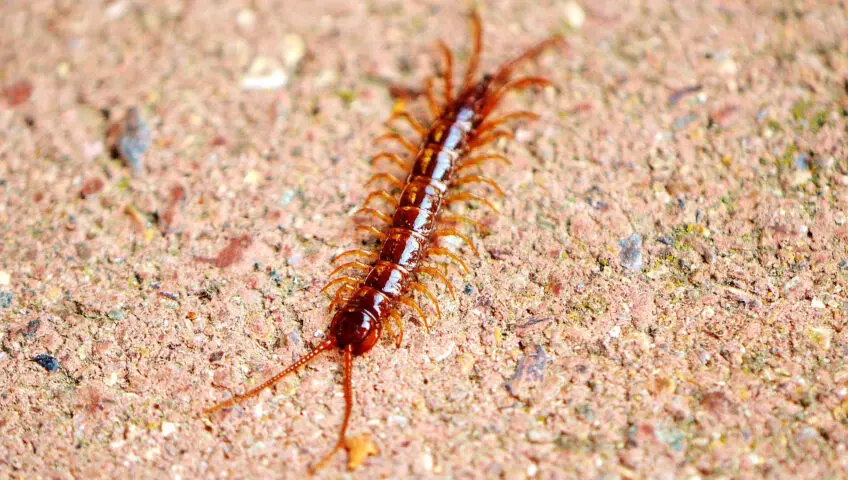Florida often plays host to some rather unwelcome visitors in its residents’ homes. One such intruder that can send shivers down your spine is the centipede. While these many-legged creatures may serve important roles in the ecosystem, having them inside your home can be unsettling.
Centipedes are arthropods belonging to the class Chilopoda. With their elongated bodies, numerous legs and fast movements, they can resemble something straight out of a horror movie. Ranging in size from a few centimeters to several inches long, these creatures are predominantly nocturnal predators, preying on insects, spiders, and other small creatures. They possess a pair of venomous fangs that allow them to immobilize their prey before consuming it.
The Florida connection
Florida’s warm and humid climate creates the perfect environment for centipedes to thrive. Native centipede species in the region include the Florida blue centipede (Hemiscolopendra marginata) and the tropical centipede (Scolopendra subspinipes). These creatures are often found in outdoor habitats such as gardens and leaf litter, where they play a crucial role in controlling pest populations.
Unwelcome guests
Despite their ecological significance, centipedes become less charming when they venture indoors. There are several reasons you should be concerned about their presence in your home.
While centipedes generally pose little threat to humans, some species have venomous bites that can cause localized pain, swelling, and redness. People with allergies or sensitivities may experience more severe reactions, making a centipede encounter a painful experience.
Let’s face it, centipedes are not the most pleasant creatures to share your living space with. Their numerous legs, rapid movements, and nocturnal habits can trigger fear and discomfort, especially among individuals who are arachnophobic or have insect-related fears.
Centipedes are often attracted to dark, damp places, which means their presence could indicate underlying moisture issues or other conditions in your home that require attention. Also, they are predators that feed on insects, which means their presence might signal an underlying pest problem. Having centipedes around could mean that you also have an increased population of their prey, such as spiders, cockroaches, and silverfish.
Prevention and control
To keep centipedes from infiltrating your home, consider the following preventive measures:
Seal entry points: Make sure windows, doors, and other potential entry points are properly sealed to minimize the chances of centipedes finding their way inside.
Reduce moisture: Centipedes thrive in damp environments, so address any moisture issues such as leaks, standing water or high humidity levels.
Declutter: Clearing clutter from basements, attics and other dark spaces can help reduce potential hiding spots for centipedes.
Regular cleaning: Regularly vacuuming and dusting your home can help eliminate the insects that centipedes feed on, reducing their attraction to your space.
Call us
If centipedes become a persistent problem, call Slug-A-Bug at (321) 259-7844. We can assess the situation and provide effective solutions.
For more information:
https://www.britannica.com/animal/centipede
https://www.thoughtco.com/facts-about-arthropods-4069412
https://www.healthline.com/health/centipede-bites
https://www.verywellmind.com/what-is-the-fear-of-insects-2671770
